Figure 1: Procedure description of scrotal neuter performed on two rats “Turing” and
“Angelus”
Accompanying surgical photos show neuter performed on Angelus
Procedure
Dr. Peter Fields asked me if I would like to assist with this procedure, as he does on any occasion we take in our Rats and Rescue Animals. The surgery went very well.
Turing went under very quickly while Angelus decided to fight the Isoflurane. We ran the ISO at 2% for Turing, although with Angelus we initially pushed for 3% who is of a greater body mass. Turing remained under at 2%
while I ran the ISO at 2.5%, subsequently, for Angelus for the entire procedure.
Each testes was removed individually, the right side first and then the left, clamped and tied off with Cat gut 0.3mm. The testes themselves are a very friable organ , and Dr. Fields did and extremely neat job of not
compromising the very fine membrane.
After the internal suturing he then closed the scrotal sack with two horizontal stitches, although Angelus received a third stitch being he was a very large male.
Following surgery, Turing regained consciousness after only 40 sec. of oxygen, where as Angelus regained consciousness within 90 seconds.
It was my job to assist with clamping and cleaning, and keeping an eye on the respiration, and anesthesia. Both Rats had good strong heart rates, respiration, and maintained a good level of oxygenation throughout the entire procedure.
Turing bled a little more, but it was remarked that when Dr. Fields was extracting the testes from the scrotal sac, he had a very good vascular system (in fact larger than normal veins were present on the dorsal area of
the testes near the vas deferens).
The external sutures used were a synthetic fibre called Vetafil.
Nothing untoward occurred during the procedure. It was basically a very straight forward neutering.
Both patients were on a heating pad throughout, and put onto clean towels in their travel boxes near the heating unit to recover. Both drank water within 30 min of surgery, and no antibiotic therapy was required.
The sutures were removed 7 days post surgery.
It is reported that there are several vets who prefer to do abdominal neuters. These two scrotal neuters were quick and easy and in total both were done and completed in 1 hour; each surgery taking a maximum of 20 minutes from primary incision to final suturing.
Abdominal neutering is usually carried out when one or both testes are retained (undescended), but it can carry a higher risk due to being longer and much more complex, and will also require post operative analgesia.
Recovery time is quicker with a simple scrotal neutering, than with any abdominal surgery, and I would recommend this method for neutering bucks. We have neutered many bucks that have come through our Rodent Rescue and have had no complications, and a 100% success rate.
I hope this will give you an idea of what is involved in this type of surgery, should you need to make a decision on neutering your male rat .
Louise Dux, Certified Laboratory Animal Technician
Facilitator for Brisbane Rodent Rescue
Photos
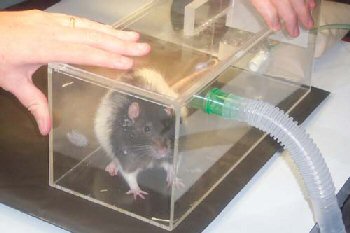 Photo 1: Anesthetic Chamber. |
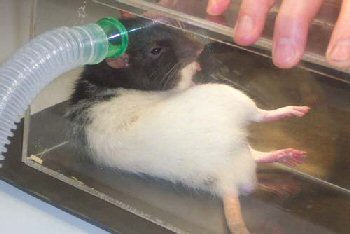 Photo 2: Isoflurane being given. |
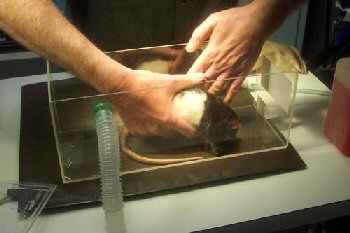 Photo 3: Anesthetized. |
 Photo 4: Prepping of incision site . |
 Photo 5: Ensuring the testes are completely descended. |
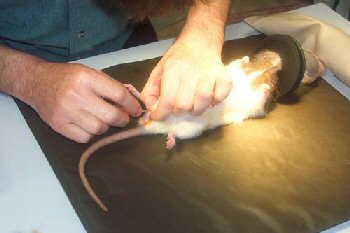 Photo 6: The initial incision is made. |
 Photo 7: Extracting the testes prior to clamping. |
 Photo 8: Removing testes from scrotal sac. |
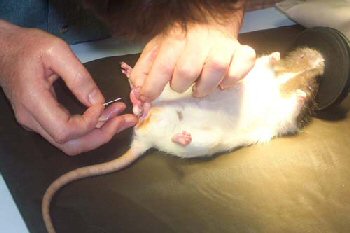 Photo 9: Excising connective tissue. |
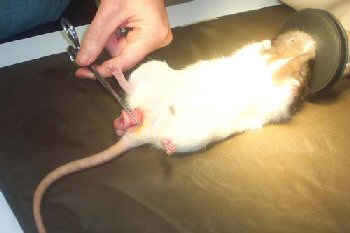 Photo 10: Clamping prior to internal suturing. |
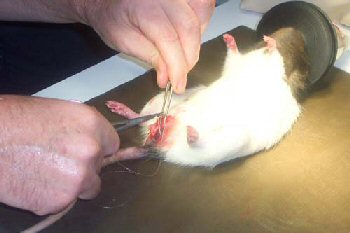 Photo 11: Internal suturing. |
 Photo 12:The first of external suturing for closure. |
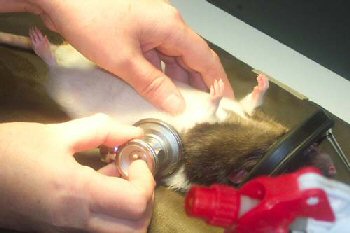 Photo 13:The monitoring of the heart rate and respirations. |
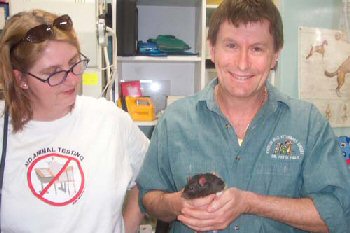 Photo 14: Recovery complete. |
Procedure Description and Photos courtesy of the following individuals:
Dr. Peter Field B.V.S.C. (Hons.) M.A.C.V.Sc.
Member of the Australian College of Veterinary Scientists by examination in Canine Medicine
Veterinary Physician and Surgeon, Everton Hills Veterinary Surgery, Everton Hills, Brisbane Qld, Australia
Photographer: Lene Jorgensen and Owner of Rat Angelus
Surgical Assistant: Ms. Louise Dux, Certified Laboratory Animal Technician


